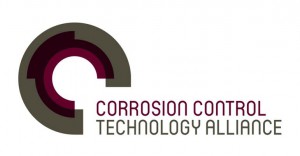Coating inspection and specialty coatings
The Corrosion Control Technology Centre provides:
1. Coating Inspection (NACE)
2. Protection against Microbial influenced corrosion (MIC) and Chloride pitting
3. Corrosion resistant coatings
4. Underwater coatings
1. COATING INSPECTION
Inspection of pre-treatment
Een optimale hechting van een duurzaam coatingsysteem valt of staat bij de juiste voorbehandeling. Zowel de oppervlakte reinheid als de oppervlakte ruwheid worden in deze fase beoordeeld. Overigens kan ook achteraf worden beoordeeld of de voorbehandeling adequaat is geweest.
Optimal adhesion of a sustainable coating system stands or falls with the correct pre-treatment. Both the surface cleanliness and the surface roughness are assessed in this phase. It can also be assessed afterwards whether the pre-treatment has been adequate.
Inspection of climate conditions
The temperature and humidity are very important for the end result. At too low temperatures, not all coatings will be able to cure properly. Condensation is often not visible to the eye or noticeable. Many coatings will therefore not adhere well. The climatic conditions are measured on the basis of:
• Air temperature
• Relative air humidity
• Dew point
• Surface temperature
If the climate conditions are unfavorable for a good end result, conditioning the environment is essential. Condensation and fly rust are prevented with dry air. See Corrosion stop with dry air
Measuring the layer thickness
Too thin a coating system ensures that the desired protection is not achieved. If the layer is too thick, cracks may form or the coating will not cure. A coating wears out. An old coating or a coating that has suffered a lot can become permeable. Moisture particles can reach the underlying steel and cause corrosion. Permeability is also measurable.
Measuring the degree of hardening
If a coating system is not hard enough, it is vulnerable to damage or chemical attack (soaking). There are various test methods to determine the hardening.
Assessing the adhesion
Bonding of the coating system is of course essential. The adhesion can be assessed by means of a tensile test. For this test, a piece of the layer is removed and then restored.
Adhesion testing is also performed on reference plates. These plates are treated in the preservation process under the same conditions.
Assessing color & gloss
A homogeneous color result is often desirable, but discolorations can also indicate errors in the coating system.
2. Stainless steel protection from MIC and chlorides
The Corrosion Control Technology Center (CCTC) offers a complete program for controlling MIC and metal surface treatments. But if the supply of chlorides or microorganisms cannot be prevented and chemistry (biocides / corrosion inhibitors) is not an option, then either a different material or shielding of the metal surface must be chosen. Especially with stainless steel 304 that is likely to be more sensitive to MIC and chloride pit corrosion. 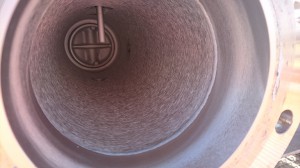 A 2-component stainless steel coating offers special protection that can be applied to the bare metal surface without a primer. This offers good protection to chlorides, microorganisms and many chemicals. The ultra-thin coating penetrates, between the grains of the steel surface and thus offers a very good adhesion. The coating hardens quickly, very smooth and crystal clear. The smooth surface makes it difficult for microorganisms and deposits to adhere. The clear finish offers the advantage that the underlying metal remains more visible. Chloride pit corrosion and MIC are mechanisms that penetrate deep into the metal and can remain active even after a coating has been applied and can even lead to weakening or perforations in the long term. This transparent coating offers a view on possible degradation processes that usually stay unnoticed under a coloured coating.
A 2-component stainless steel coating offers special protection that can be applied to the bare metal surface without a primer. This offers good protection to chlorides, microorganisms and many chemicals. The ultra-thin coating penetrates, between the grains of the steel surface and thus offers a very good adhesion. The coating hardens quickly, very smooth and crystal clear. The smooth surface makes it difficult for microorganisms and deposits to adhere. The clear finish offers the advantage that the underlying metal remains more visible. Chloride pit corrosion and MIC are mechanisms that penetrate deep into the metal and can remain active even after a coating has been applied and can even lead to weakening or perforations in the long term. This transparent coating offers a view on possible degradation processes that usually stay unnoticed under a coloured coating.
3. CORROSION RESISTENT COATINGS
A wide range of coatings and their application is available for all industrial applications:
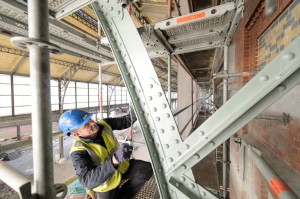
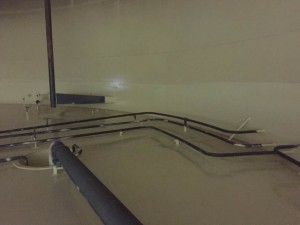
Primers: Shop primers; Epoxy zinc primers; primers for galvanized and stainless steel and aluminum, pure & modified epoxy primers, glass flake epoxies etc.
Coatings: Tank coatings, heat-resistant coatings, container (repair) paints, all paints and coatings and RAL colors.
4. UNDERWATER COATINGS
Underwater constructions such as jetties, sheet piling and mooring posts can suffer heavily by marine conditions. Micro-organisms can play an important role in this (MIC).
Experienced divers are trained to assess the damage to underwater structures and to take samples for microbial analysis and metallurgical survey.
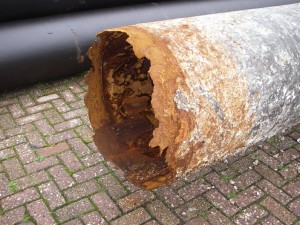 The Corrosion Control Technology Centre also offers a complete program of damage investigation, cause determination, removal of biofilm underneath which microbial corrosion occurs, repair work and the application of underwater curing coatings.
The Corrosion Control Technology Centre also offers a complete program of damage investigation, cause determination, removal of biofilm underneath which microbial corrosion occurs, repair work and the application of underwater curing coatings.
Corrosion Control Technology Centre
Contact: Frans van der Kolk
T. +31 (0)653206225
kolk@corrosioncontrol.nl
